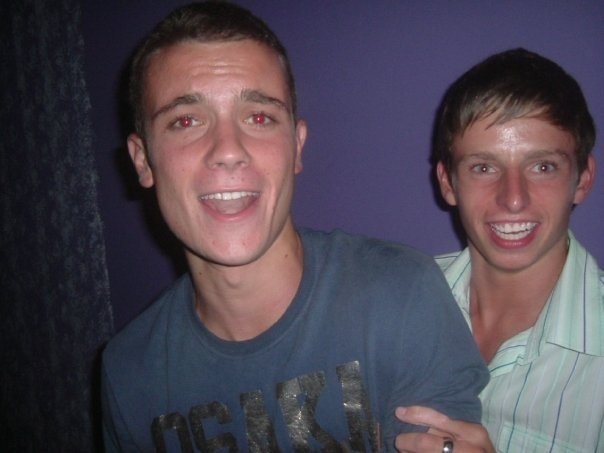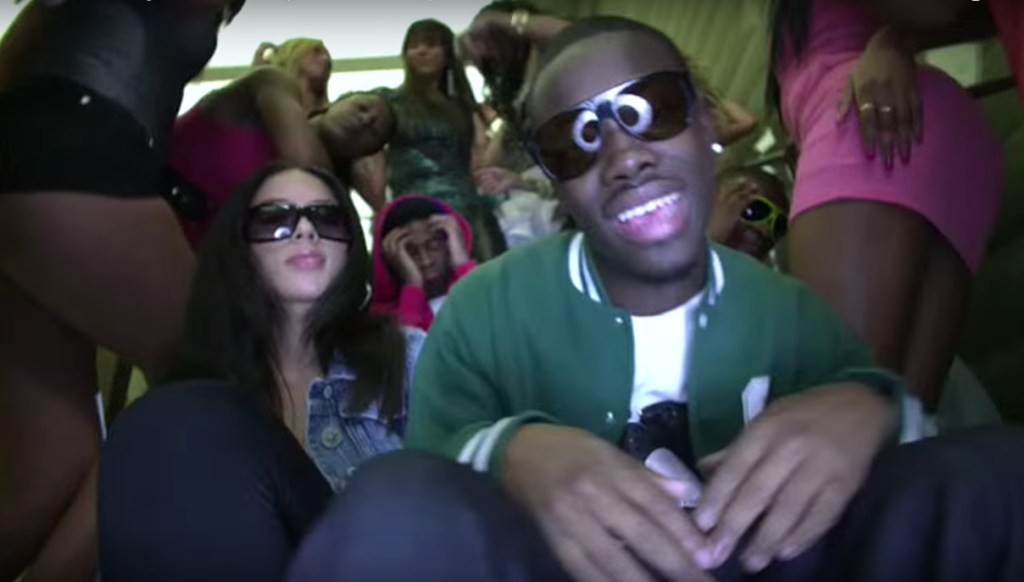Remember funky house? With its brittle vocals, syncopated drums and unabashed commitment to being sexy and happy, the short-lived scene was a genre that felt as at home on the top deck of suburban buses, as it did in dark basement raves and the confines of a small town’s one and only nightclub.
After years of new rave and rudderless nights of chart-hits-only DJs, its heroes were the kids who grew up on the last fumes of garage and wanted to bring some fun back to London. For anyone reading this who didn’t grow up in Britain in the 2000s, funky house was basically one of the most feel-good scenes to ever crawl into the national consciousness. And then it disappeared quicker than you can say “Migraine Skank”.
Videos by VICE
It’s for those reasons that a large section of the Internet skipped a heartbeat when Drake decided to sample the genre’s one night stand anthem – Kyla and Crazy Cousinz 2008 hit “Do You Mind” – on his new single “One Dance” this month, thus transporting every British listener over the age of 24 right back to those airless dancefloors and dripping ceilings. Returning to a genre that hasn’t been thought about in nearly half a decade; one that belongs to BBM messenger and the novelty of the smoking ban; that thrived on the last healthy stretch of London’s club culture before deep house, the proliferation of brioche buns, and large scale drug busts wiped everyone out.
At its peak, during 2008/09, it seemed like a new funky house track was setting Blackberry Messenger alight on an almost daily basis. Arguably, that service gave Fuzzy Logic’s “The Way You Move”, DJ Naughty’s “Quicktime” and hit after hit from the Crazy Cousinz a grass-roots feel. Like early grime instrumentals or white label jungle classics, these tracks would be passed around between friends before reaching the masses. As a result, funky felt fresh and collective, as though everyone moved as one, towards a simple sound that seemed to incorporate almost everything good that had gone before.
By the time it had been pushed into the club and radio circuits by the likes of Supa D, Angie B and Pioneer, Essex had become somewhat of a heartland. That’s where I grew up and as soon as I turned eighteen, I went to my first UK funky night at a club called One Three One in Romford. Like everyone else at the venue, I’d purchased my tickets from a bloke who went to my school and made “serious wedge” from “shotting” guest list entry to the “hottest UK funky nights”. These college kid “promoters” would hook you with a double-pronged attack of blanket Facebook invites and a barrage of jittery, desperate text messages usually saved for small-time coke dealers. Beyond the massive, radio-friendly hits, perhaps the biggest evidence of how big funky house became lay within the way these nights were promoted. These teenage entrepreneurs understood the thirst for funky house had become high among London’s young adults, and that there was a decent amount of money to be made. But how did the genre grow so big, so quickly?

The author getting excited to see Cooly G in a club in Romford
I guess it’s a cyclical thing, but as drum and bass and dubstep started to reach the tail-end of their peak eras, they became wall-to-wall sausagefests. Prone to large gangs of ketamine-addled teens with body odour issues, they weren’t places that championed a balance of the sexes. Funky house was different. At a funky rave, girls and boys became one. Women in Lipsy dresses with babyhair-fringes pasted to their foreheads, shining and glistening, shouting for one more tune; men in shirts from Burton and Topman in Gucci loafers, legs sweat-wrapped in stretch-denim, downing their drinks so they could glide back on the dancefloor and maybe pluck up the courage to dance with that girl. As a genre, it appealed to the semantics of a classic, big night out on the town. It was the assonance of the chirpse, coated in a healthy dose of Hugo Boss: In Motion aftershave.
Through mixing up the sexes and offering up a new but familiar sound, it gave a specific generation something of their own. Our older brothers taught us that the clubbing realm was one of rave whistles, ecstasy, glow-sticks and stomach pumps. But UK funky showed us that all we really needed was a gumbo of afro-and-broken beat, soca, four-to-the-floor rhythms and R&B vocals – mixed, of course, with a dehydrating blend of JD and coke, five-pound entry, and a night bus all the way home. For the first time, the club felt like it was ours.
As it goes though, UK funky’s mainstream ascension only lasted about three years. For every “Bongo Jam” or “Do You Mind”, there was an “Are You Gonna Bang Doe”, “Rolex Sweep” or “Heads Shoulders Knees and Toes” – tracks that practically confirmed the genre would soon become the novelty soundtrack to every bad freshers week in the country, eventually leading to its demise. By 2011, “[UK Funky] was done.” That’s what Rinse FM legend Roska, a producer and DJ who was in the thick of it, said to the Guardian. “Nobody even seemed to care, everyone had gone on to something else.”
That’s something I remember witnessing myself in the summer of 2011, on a beach in Ayia Napa. As the clock struck 4am and the first sunlight started to creep on the purple Cypriot horizon, the DJ played Attacca Pesante’s “Make It Funky For Me” – a track I’d seen detonate clubnights for years. Thing is: barely anyone budged. The dance-floor nodded and bobbed the way it did before, but there wasn’t any variation in frequency or excitement. The DJ shouted at people to dance, but it was over. The man on the decks gave in and discreetly wheeled it up and put on something else. Nobody complained. The genre just seemed to crossfade out of history.
On reflection, most of the songs do sound like amateurish relics of cheesy garage-house, disco-karaoke and grime side-projects. Lazy, cynical, cheap – and maybe they are. There was even a Crazy Cousinz remix of “Boy Does Nothing” by Alesha Dixon that used to burn down crowds as soon as the producers’ signature “Oh!” samples popped into the intro. But the truth is, nobody was really there for the artistic merit of the sound. It was a genre created for suburban kids who had tired of grime, tired of dubstep, and tired of serious; who just wanted something they could dress up for and dance to. It was never about technique and craft. It’s in this way that Drake’s funky house cape seems to fit him better than most: you can imagine he feels more comfortable ordering bottle service in a club than he does tinkering with the EQ quality of his mixes.
Funky house might have been brushed off these last few years as a bit of a laugh, but its legacy in British music is less of a joke. Key players like Katy B (Baby Katy back then), Cooly G (now on Hyperdub), and both Roska and Marcus Nasty have all moved on to pastures new, and often more critically acclaimed. But with the outpouring of nostalgia around Drake’s new single, and Kyla promising imminent new material, then who knows? Maybe the funky house story doesn’t have to end facedown and ass-up on the sick-coated floor of a provincial town’s freshers week. Perhaps there’s more life in it, yet.
Follow Sam on Twitter.




